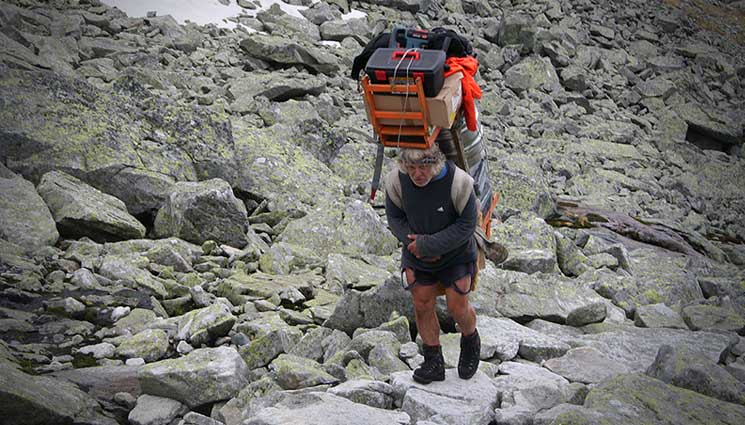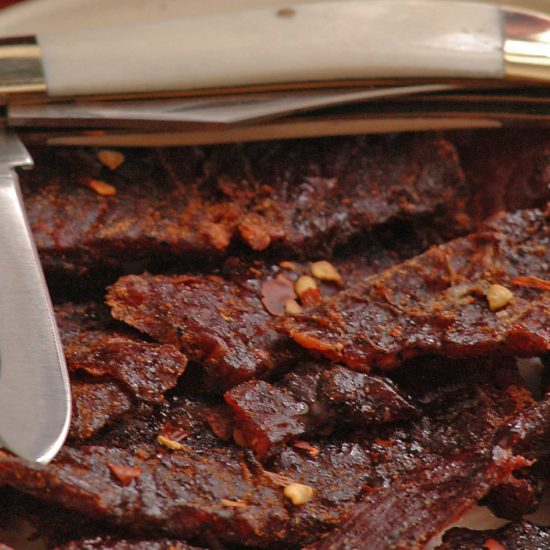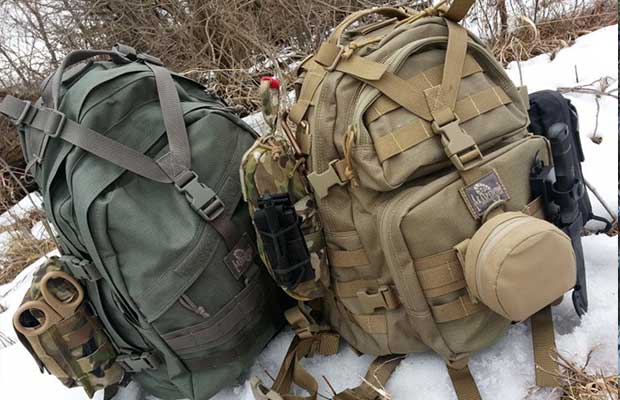
One of the wisest things you can do with any aspect of prepping is to have direct first-hand knowledge of how to use whatever skill, tool or gear you are counting on to save your life. This applies to so many things, but it bears repeating. If you purchase a generator to keep the lights on for your family, you should start that puppy up once a year at least. Make sure you know that it works first of all, that you have the proper fuels and lubricants and know how to make it run. If you don’t know all of that, your generator might be worthless.
Its similar with food and long-term food storage. If you are like so many others that have purchased large bags of Hard Red Winter wheat, have you ever eaten any of this? Do you have a grain grinder? Have you ever taken a turn at grinding enough grain to make a single loaf of bread? If not, it is so much better to do this while the grocery stores are still open. Better to find out now that you don’t have something vital to your food preparations than after the world has collapsed around your ears. It is so much more advantageous to know what works and what doesn’t while you still have options to make changes.
I found myself with the same opportunity a couple of weeks ago with what I plan to use as my Bug Out Bag.
Our family decided to go on a backpacking trip for a few days into the wilderness. For this trip we would be staying overnight in the woods obviously and had to carry almost everything to keep us alive for a couple of days, possibly more on our backs. This scenario mirrors almost identically a bug out situation where you are forced to evacuate your home with nothing but what you can carry. A traditional Bug Out Bag is designed to contain enough supplies (food, shelter) to keep you alive for 72 hours. As it so happened, that was about the length of time we were in the woods.
My pack weighed about 45-50 pounds and some of that was due to my taking on weight that my wife couldn’t carry. This could happen to you if someone becomes injured or unable to continue. Even at my initial load it would have been about 40 pounds. That is fine, but not ideal for me I don’t think. Can I carry more weight? Of course. Do I want to be carrying more weight if I am running and potentially hiding for my life? No. What did I have in my pack? Here’s my list below:
- Two (2-man) tents
- Ultra lite Sleeping bag
- Sleeping pad
- Tarp or Rain Fly
- Small first aid kit
- GPS
- Various dehydrated foods
- Nalgene water bottle
- Fleece, gloves, hat
- Water filter
- Assorted gear (flashlight, snacks, multi-tool)
I am sure there were other little knickknacks but the point is that I wasn’t bringing what I would consider to be a lot of useless stuff. I also had a .45 strapped to my side.
I have discussed this topic before in our post “Is your Bug Out Bag Going to Get You Killed?” where I cautioned anyone who thinks that they can strap on 50 pounds let alone hauling a load like the Sherpa in the picture above of gear and run out into the woods . This trip gave me some additional ideas as I reflected on my pack for the duration of our hiking. I started to think about this weight on my back being both all I could depend on as well as something that could easily be my downfall.
Weight A Minute!
Now, there are a lot of people out there who reacted pretty strongly to my post and thought that weight = security. The most important thing they said was to take everything you need and if it got to be too heavy, or if you had to abandon anything that was a choice you could make on the road. I agree with that concept as a last resort to some extent, but I don’t think that should guide your initial load out decisions. Weight is probably the single most dangerous aspect about any bug out bag for a couple of reasons.

First off, weight over time can slow you down. This isn’t anything surprising to most people I know but you would not believe how many of you out there (I was like this too) will fall for the trap that says if I am in a serious enough situation, I can carry more weight because my life will depend on it. That sounds good as you sit in your house and read this post on your computer or your smart phone. 50 pounds doesn’t sound like much does it? When is the last time you strapped 50 pounds on your back and tried hiking up a mountain? It is different from walking out your driveway.
The “conventional” hiker/backpacker wisdom I hear all of the time is that the average person should not plan on carrying more than 25% of your overall body weight. Let’s assume for the sake of this discussion that you weigh 200 lbs. 25% of 200 is 50 lbs, right? Ta Da! There is that magic number! So, according to conventional wisdom, anyone who weighs 200 pounds or more should be able easily lug around 50 pounds on their back. While this is technically possible (I know because I have done it on many occasions) that doesn’t make it the wisest thing you can do.
I have also heard the argument that a military load out is heavier than that and this is certainly true however; do you want to start out carrying the most weight you possibly can? Now that we mention it, are you in the same physical shape as a 19 or 20-year-old soldier? I know there are 60-year-old men who do this all of the time, but the average person isn’t like that.
Weight in your pack slows you down and wears you out. Can you physically handle the weight? Maybe, but should you? Do you need to? Will that weight be on your back when you are trying to run? Will your bug out route take you up hills or mountainous terrain?
Take a look at professional hikers. For instance, the people who hike the Appalachian trail or the Pacific Crest trail in one long stretch are called thru hikers. They have taken hiking to a new level because if you’re expecting to put your body through that kind of stress (2,160 miles), you seriously have to consider each and every piece of gear. Their average pack load for the essentials, not counting food is around 14-16 pounds. Do you think you could hike further, faster and more comfortably if you lost 30 pounds from your bug out bag? I know that I certainly could have. Does that mean you make sacrifices? I am certain you do and a 16 pound pack is made with the goal of arriving at a resupply point many times along your route. It does consider fatigue and injury though which are two other factors you will have to address at some point with a larger pack unless you are a super hero.
Can you dance with that thing?
On our trip I was hiking up and down mountains on very narrow trails gaining over 1000 feet in elevation each way. We frequently encountered downed trees that we either had to go over or under. This same pack I was wearing wasn’t only heavy but it threw off my balance and added to my silhouette. When I tried to scramble over logs, I had to make sure I had a good hand-hold or else the pack weight might pull me back down the mountain. Simply ducking under a tree wasn’t so simple anymore and frequently I had to get down on my hands and knees to just clear a log. Normally, I wouldn’t have broken stride because I could just dip, go under and back out. My big pack added almost two additional feet of clearance obstacles at points behind me and would catch on a lot more than I normally would.
Getting back to the injury topic, with the extra weight and loss of balance I was less sure-footed so I had to go much slower to prevent getting hurt. The nimble hoping over rocks was replaced with carefully treading and watching each foot fall. If we are out day hiking I keep a steady pace, but with the big bag my kids were lapping me. All things to consider.
Walk the walk
It is so important that you get out somewhere and try out your bug out bag for 72 hours. This is a simple weekend camping trip and will show you so much about your pack that you simply don’t consider when you are throwing stuff in there. My mistake when I first started to pack my bug out bag was to list all of the gear I could possibly use, find the gear I could afford and throw it into a pack that was reasonably priced. This led me to a pack I didn’t really want to lug around and if I had to in a high-stress environment I can see bad things happening.
Remember, this hiking trip you are taking to practice with your bug out bag should be fun. You won’t be running for your life, fleeing your home and weighed down with guns and ammo. Making informed decisions about your bug out bag now will save you when you truly do have to Bug out. Could I work out more, get stronger and carry that bag more easily? Absolutely and that would help, but the average person has the grab and go plan for their bug out bag. Are you able to grab what you have and thrive or will you be dragging butt quickly after you walk out the door with your world on your back?




















